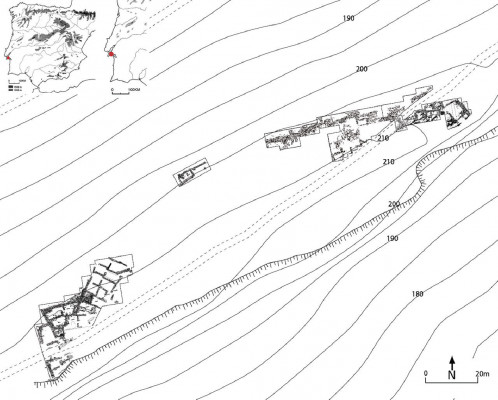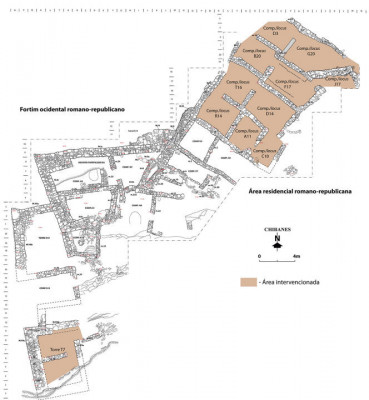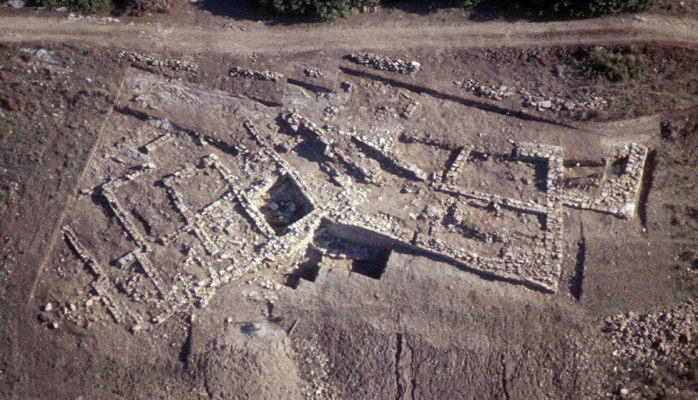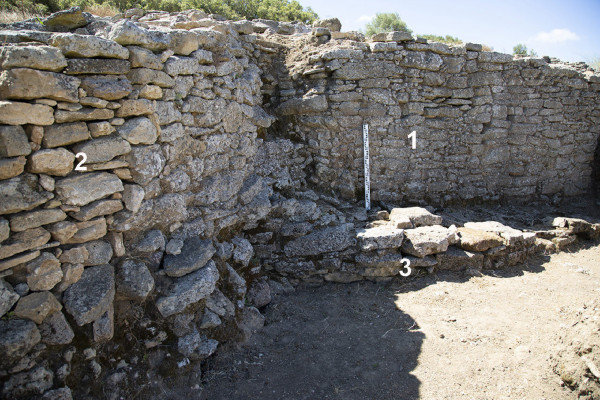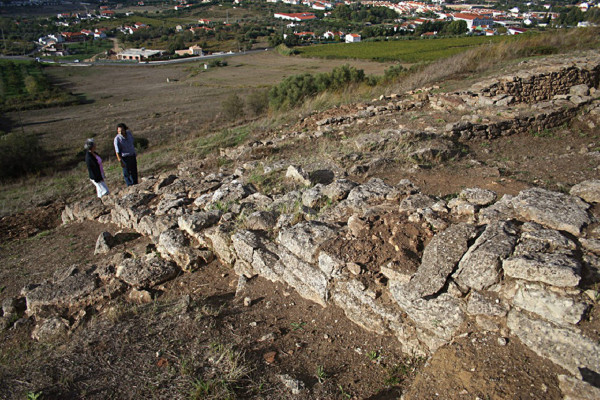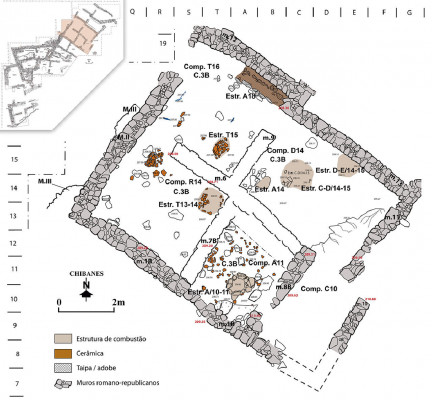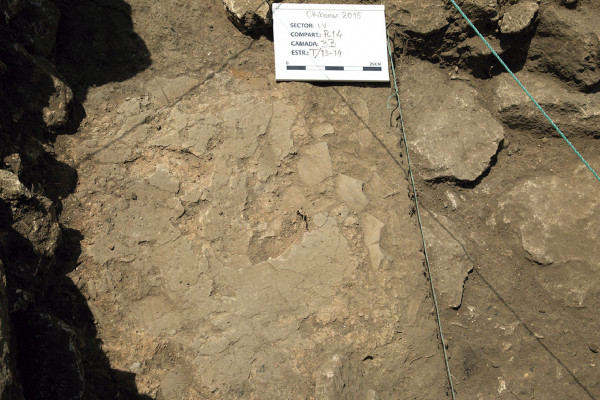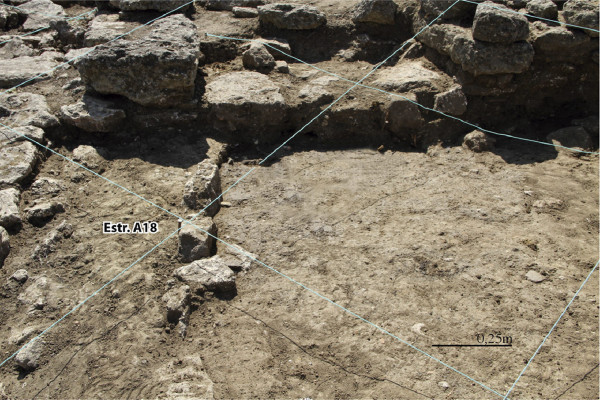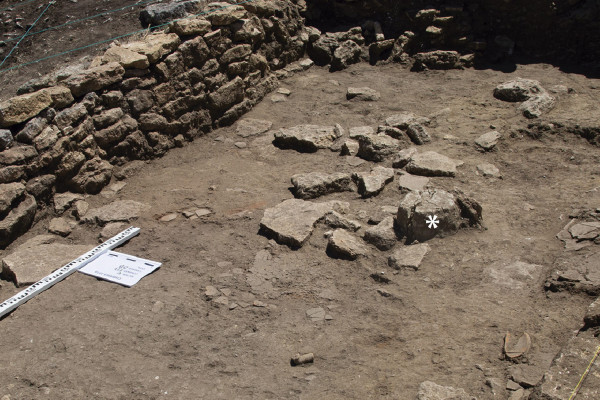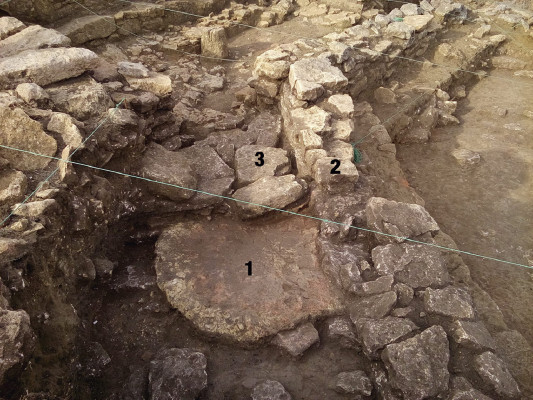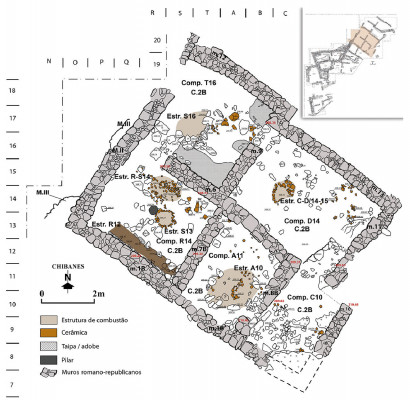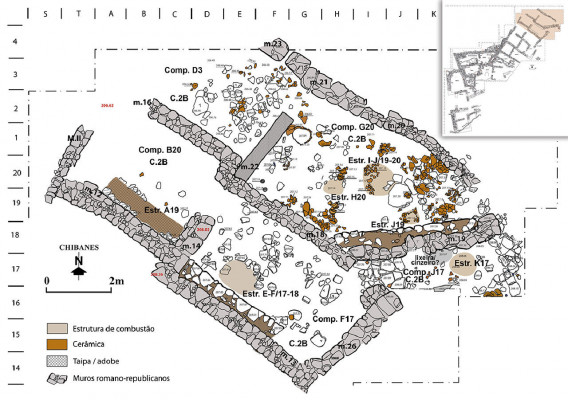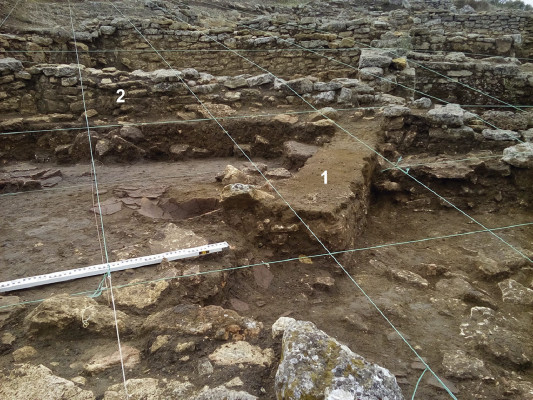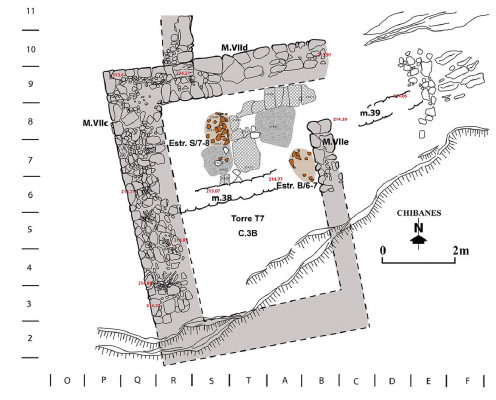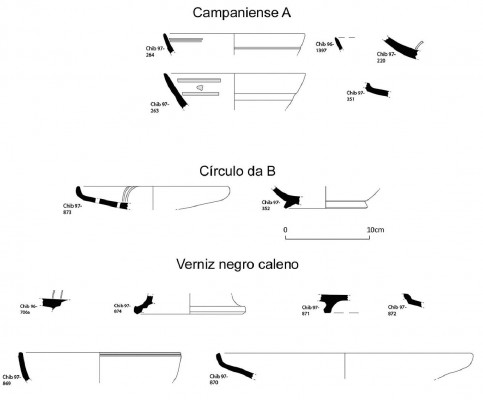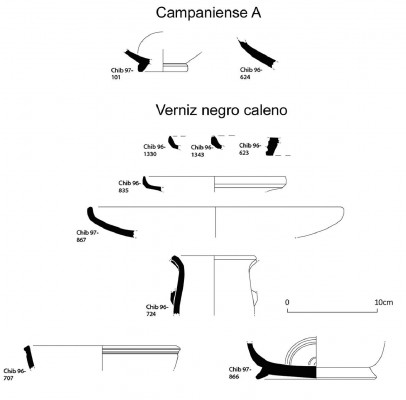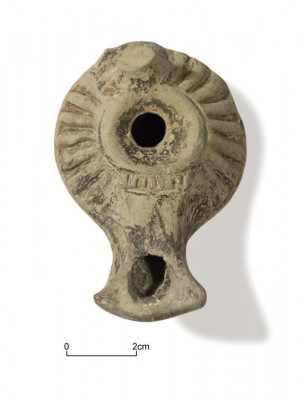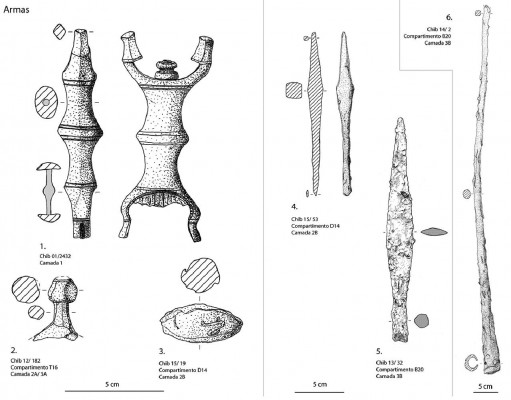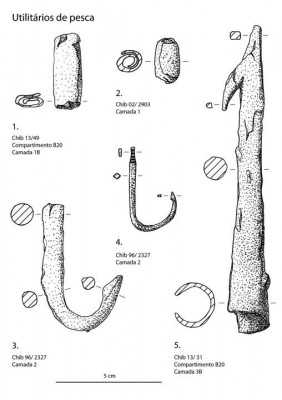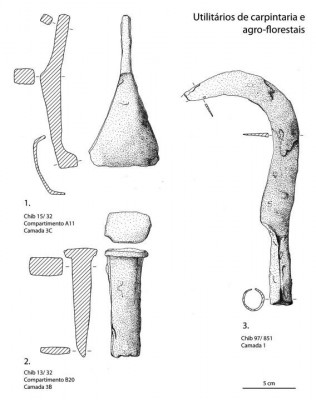Choose locations to explore
Select the desired period of history
4th/3rd - 1st century BC
Castro of Chibanes
The site of Chibanes was occupied during the 3rd millennium BC, in the second Iron Age and the Roman Republic period. The three fortification were erected with nearly coincidental layouts, taking advantage of natural conditions of defence.
The Roman Republican era fortification appears to have been built as part of the military campaigns of Roman conquest of the Hispanic West. The architecture of this occupation is overlapping and juxtaposed to the Iron Age wall and organized as two small forts located in town's opposite entrances. To the north, these structures are connected by a wall delimiting the inhabited enclosure (about 2.5 acres). To the south, the site is defended by a sharp natural slope. In the first phase of the late Republican occupation, the military character is more evident than later, when there was a more domestic use of the space.
The material culture (amphora, metallic artefacts, italic black varnish ceramics) dates the late Republican occupation of Chibanes to between the late 2nd and mid-1st century BC. The archaeological information can be articulated with the classic sources. Chibanes may correspond to the ptolemaic Caepiana.
The Roman Republican era fortification appears to have been built as part of the military campaigns of Roman conquest of the Hispanic West. The architecture of this occupation is overlapping and juxtaposed to the Iron Age wall and organized as two small forts located in town's opposite entrances. To the north, these structures are connected by a wall delimiting the inhabited enclosure (about 2.5 acres). To the south, the site is defended by a sharp natural slope. In the first phase of the late Republican occupation, the military character is more evident than later, when there was a more domestic use of the space.
The material culture (amphora, metallic artefacts, italic black varnish ceramics) dates the late Republican occupation of Chibanes to between the late 2nd and mid-1st century BC. The archaeological information can be articulated with the classic sources. Chibanes may correspond to the ptolemaic Caepiana.
Add to route
Typology
Camp
Archeological interventions
1996; 1997; 1998; 1999; 2001; 2002; 2012; 2013; 2015; 2016-2017
Suggested reading
Soares, J.; Tavares da Silva, C. (2014) - O Projecto de Investigação Arqueológica "CIB" e a campanha de escavações Chibanes/2012. Musa. Museus, Arqueologia e Outros Patrimónios. 4, pp. 75-98.
Soares, J.; Tavares da Silva, C.; Duarte, S.; Pereira, T. R.; Soria, V. (2019) - Aspectos da presença militar romano-republicana no castro de Chibanes (Palmela). Revista Portuguesa de Arqueologia. Vol. 22, pp. 79-93.
Tavares da Silva, C.; Soares, J. (1997) - Chibanes revisitado. Primeiros resultados da campanha de escavações de 1996. Estudos Orientais. 6, pp. 33-66.
Tavares da Silva, C.; Soares, J. (2012) - Castro de Chibanes (Palmela). Do III milénio ao séc. I a.C. In Palmela arqueológica no contexto da região interestuarina Sado-Tejo. Palmela: Município de Palmela, pp. 67-87.
Tavares da Silva, C.; Soares, J.; Duarte, S.; Pereira, T. R.; Coelho-Soares, A.; Sorìa, V. (2019) - Castro de Chibanes (Palmela): Trabalhos arqueológicos de 2012 a 2017. In Soares, J., Pinto, I., Tavares da Silva, C. (coord.) - Actas do IX Encontro de Arqueologia do Sudoeste Peninsular: Do Paleolítico ao período Romano Republicano (Setúbal Arqueológica, 18). Museu de Arqueologia e Etnografia do Distrito de Setúbal/Associação de Municípios da Região de Setúbal, pp.215-246.
Soares, J.; Tavares da Silva, C.; Duarte, S.; Pereira, T. R.; Soria, V. (2019) - Aspectos da presença militar romano-republicana no castro de Chibanes (Palmela). Revista Portuguesa de Arqueologia. Vol. 22, pp. 79-93.
Tavares da Silva, C.; Soares, J. (1997) - Chibanes revisitado. Primeiros resultados da campanha de escavações de 1996. Estudos Orientais. 6, pp. 33-66.
Tavares da Silva, C.; Soares, J. (2012) - Castro de Chibanes (Palmela). Do III milénio ao séc. I a.C. In Palmela arqueológica no contexto da região interestuarina Sado-Tejo. Palmela: Município de Palmela, pp. 67-87.
Tavares da Silva, C.; Soares, J.; Duarte, S.; Pereira, T. R.; Coelho-Soares, A.; Sorìa, V. (2019) - Castro de Chibanes (Palmela): Trabalhos arqueológicos de 2012 a 2017. In Soares, J., Pinto, I., Tavares da Silva, C. (coord.) - Actas do IX Encontro de Arqueologia do Sudoeste Peninsular: Do Paleolítico ao período Romano Republicano (Setúbal Arqueológica, 18). Museu de Arqueologia e Etnografia do Distrito de Setúbal/Associação de Municípios da Região de Setúbal, pp.215-246.
Address
Chibanes, Serra do Louro, Palmela
Useful links
Municipal Museum of Palmela - https://www.cm-palmela.pt/frontoffice/pages/1414
Museum of Archaeology and Ethnography of the District of Setúbal - http://maeds.amrs.pt/maeds.html
Museum of Archaeology and Ethnography of the District of Setúbal - http://maeds.amrs.pt/maeds.html
Identification code
LxR1508001
Cookies
All cookies used by www.lisboaromana.pt website are for the technical storage or transmission of communication through an electronic communications network.
The website www.lisboaromana.pt also uses language cookies for website users. These cookies have a duration of one year. See our Cookie policy
